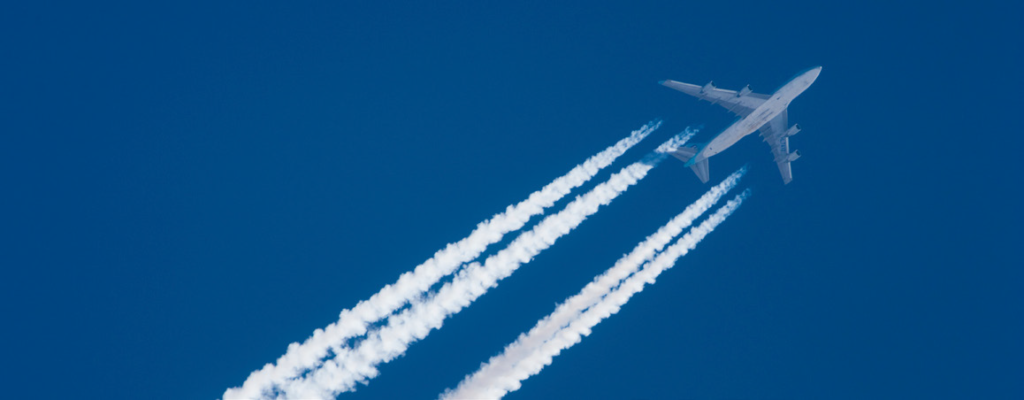The aviation sector is one of the sectors which was hit hard by the covid-19 global pandemic When the World Health Organisation (WHO) declared covid -19 a global pandemic in 2020, airlines around the world ceased operations and aeroplanes where grounded. Countries implemented lockdowns in an effort to curb the spread of Covid -19 due to travelling. The implementation of national lockdowns all over the world resulted in a reduced amount of greenhouse gas emissions from air travel. In 2016, civil aviation, as a whole, emitted around 814 million tonnes of Carbon dioxide (CO2), which is roughly 2% of man-made carbon emissions.
As the battle against Covid-19 continues, many governments have decided to prioritise the economy whilst devising ways to reduce the spread of the virus. The global supply chain has been affected; economies around the world have faced massive recession. Many countries have started lifting up lockdowns. Flights around the world have resumed under strict Covid -19 restrictions and measures to reduce the spread of the virus.
The resumption of flights by the airline industry definitely has an impact on the civil aviation carbon footprint. Covid- 19 has definitely come as a great challenge to many countries all over the world. The notion of carbon footprint is here taken to comprise the overall climate impact of aviation, due to increased net emissions of several climate gases which include Carbon dioxide, Nitrous oxides, ozone, methane and water vapor.
According to the World Bank, measuring and managing the greenhouse gases of air travel involving individual passengers poses challenges at several levels. A major policy challenge arises in the international arena, since emissions from international travel for the most part do not physically take place in any one given country. The other main uncertainty lies in calculating the actual average GHG emissions per travelled distance which is key in measuring the carbon footprint of a specific air travel profile. This depends on a wide set of parameters which include class of travel, load factors, weight factors and other flight-specific factors such as flight length and average altitude. Current standard methods for calculating air travel footprints do not reflect the larger footprint attributable to premium travel. The carbon footprint of air travel tends to vary systematically and strongly between travel classes economy, business and first class; perhaps also according to other class categories when these can be specified.
The average flight length and types of airplanes used are some of the determining factors for the carbon footprint per mile for air emissions. First class air travel has a much higher carbon footprint average followed by business class which has a high average as well then lastly economy class. The seats of the first class and the business class take up a large average floor space in most airplanes. Different “load factors” which refers to the rate at which average seats are occupied on a given flight tends to be lower on average in business class than in economy class, and lower in first class. In the plane’s first class and business sections, there is greater floor space for each seat and only a few among available seats are occupied resulting in a smaller number of passengers transported per unit of floor space.

International Aviation Carbon Offsetting
The aim of carbon offsetting in international aviation is that by 2050 the aviation’s net CO2 emissions need to be reduced to half of what they were in 2005. Achieving this goal will require continued investment in new technologies and strong support mechanisms for the deployment of sustainable aviation fuels. A four pillar strategy is the method being used by aviation to address the challenges of achieving its climate goals.
• Identifying weight savings in airplanes and in turn allowing the airplane to burn less fuel thus reducing greenhouse gas emissions. Engineers have also been working on the development of more efficient aircraft engines that can substantially reduce CO2 emissions. These new technology aircraft are on average about 15 -20% more fuel efficient than the older models.
• Airlines have been investing in light weight cabin equipment, swapping heavy pilot manuals with tablet computers. Pilots have been engaging operational measures that involve single engine taxiing, idle reverse thrust and procedures that involve continuous descents into airports and traffic flow management that avoid unnecessary airborne holding.
• The industry has remained confident that technology, operational measures and better infrastructure can provide long term solutions to ensure the sustainable growth of the aviation industry. This growth will be through partnership between industry and government. A global market-based measure is needed to fill any remaining emissions gap until those other measures have taken full effect.
• Aviation has also been using the infrastructure pillar of the strategy which involves making better use of airspace, navigational improvements and streamlining the routes taken by aircraft. These measures cut down on flight time, and optimize airport layout and also improve throughput and prevent unnecessary holding.